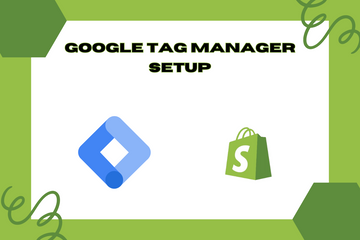As a Shopify expert, integrating Google Tag Manager (GTM) into your store is a crucial step to manage and deploy various tags efficiently. GTM allows you to handle tags from Google Ads, Google Analytics, and third-party services without modifying the code every time. This integration gives you more control over your site's performance, enhances usability, and provides numerous other benefits.
Why Integrate Google Tag Manager?
Integrating GTM offers several advantages:
- Efficient Tag Management: Manage all your tags in one place, eliminating the need for multiple code modifications.
- Improved Site Performance: Streamline the deployment of tags, which can help improve your site's performance.
- Enhanced Analytics: Collect more accurate and detailed data from various sources to better understand your site's performance.
- Ease of Use: Simplify the process of adding and updating tags without needing extensive coding knowledge.
How to Set Up Google Tag Manager
Step 1: Create a Google Tag Manager Account
- Visit the Google Tag Manager website. Sign in with your Google account, create a new account, and set up a container for your Shopify store.
Step 2: Obtain the GTM Container Code
- After creating the container, Google Tag Manager will provide you with two pieces of code (a snippet for the
<head>section and another for the<body>section of your site).
Step 3: Access Your Shopify Admin
- Log in to your Shopify admin panel. From the home screen, navigate to Online Store and then click Themes.
Step 4: Edit Code
- In the Themes section, find the theme you're using and click Actions, then select Edit code from the dropdown menu. This action will open the theme's code editor.
Step 5: Add GTM Code to the Theme Files
- Locate the theme.liquid file in the Layout directory. Open this file and paste the first GTM code snippet (for the
<head>section) right before the closing</head>tag.
Example:

- Next, paste the second GTM code snippet (for the
<body>section) immediately after the opening<body>tag.
Example:

Step 6: Save Your Changes
- Once you have added the GTM code snippets, click the Save button at the top right of the code editor.
Step 7: Configure and Deploy Tags
- Return to your Google Tag Manager account. Use the GTM interface to add and configure tags for Google Ads, Google Analytics, and any third-party services you use. Once configured, publish the container to deploy the tags on your Shopify store.
Step 8: Verify Tag Deployment
- After publishing the tags, use the GTM Preview and Debug mode to ensure they are firing correctly. Additionally, check the respective platforms (Google Ads, Google Analytics) to confirm that data is being collected as expected.
Conclusion
Integrating Google Tag Manager into your Shopify store is an effective way to manage and deploy tags from various sources without constant code modifications. By following these steps, you can gain more control over your site's performance and enhance your analytics capabilities, leading to better decision-making and improved business outcomes. Setting up GTM ensures a streamlined and efficient approach to tag management, benefiting both your store's functionality and user experience.










